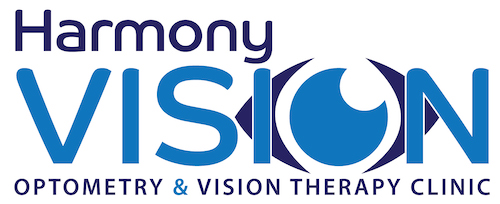Treating Lazy Eye – Is it Just About Clear Sight or Fixing the Bad Eye?
“Lazy Eye” is a term to describe many different vision problems including droopy eyelids, convergence insufficiency and eye-turns. However, the term is mainly used to describe amblyopia, which is reduced sight in one or both eyes, usually due to refractive (prescription) differences and/or eye turns.
For decades, treatments have focussed primarily on the loss of distance acuity or sight. “Passive” therapies like patching or occlusion therapy are still the primary treatment for this. In patching, the good eye is typically covered for daily periods prescribed by an eye care practitioner until no further improvement is observed. This is often in combination with glasses, which are necessary to correct prescription problems associated with the initial reason why amblyopia developed. The glasses may also help straighten turned eyes if they occur with the lazy eye.
Lazy eye can also be associated with fine motor control difficulties, sports related issues, and reports of print movement on the page. Not all people are affected in the same way. Studies show that many appear to cope quite well with the condition2. Others appear to recognise1 that for those who are affected, the cumulative impact of these challenges can a negative impact on life quality.
It is pleasing to see the increased interest in other visual skill problems associated with lazy eye is showing up in research.
Active Approaches
It is increasingly becoming recognised that lazy eye treatment may be more successfully approached, particularly in adults, by a binocular approach. This is a “two-eyed” stimulation of the visual centres through a type of vision therapy called perceptual learning3. Rather than making one eye “work harder”, the visual therapy stimulates the interaction between the two eyes. It will be exciting when this technology no doubt becomes available in the next few years. This research and Sue Barry’s remarkable story about gaining 3D vision for the first time at 48 years old through vision therapy, is a good demonstration of the plasticity of the brain4.
It is important to know however, that despite the ability to treat the adult vision system, it is important to initiate treatment as early as possible. While new research dispels the myth of a critical period of development, it certainly still strongly supports that a young visual system responds more easily to treatment.
Disclaimer – This information is intended to be general interest in nature, and is not intended to infer that improvement is possible in all persons. Persons are encouraged to seek independent eye care advice if they suspect the possibility of vision problems.
1. Grant et al. Prehension Deficits in Amblyopia. IOVS, March 2007, Vol. 48 (3): 1139-48.
2. Wilson GA, Welch D. Does amblyopia have a functional impact? Findings from the Dunedin Multidisciplinary Health and Development Study. Clin Experiment Ophthalmol. 2012 Jun 19. doi: 10.1111/j.1442-9071.2012.02842.x.
3. Evans et al. Randomised controlled trial of intermittent photic stimulation for treating amblyopia in older children and adults. Ophthalmic Physiol Opt. 2011 Jan;31(1):56-68. doi: 10.1111/j.1475-1313.2010.00801.x
4. Barry, SR. Fixing My Gaze. A Scientist’s Journey into Seeing in Three Dimensions. Basic Books. New York, 2009.
